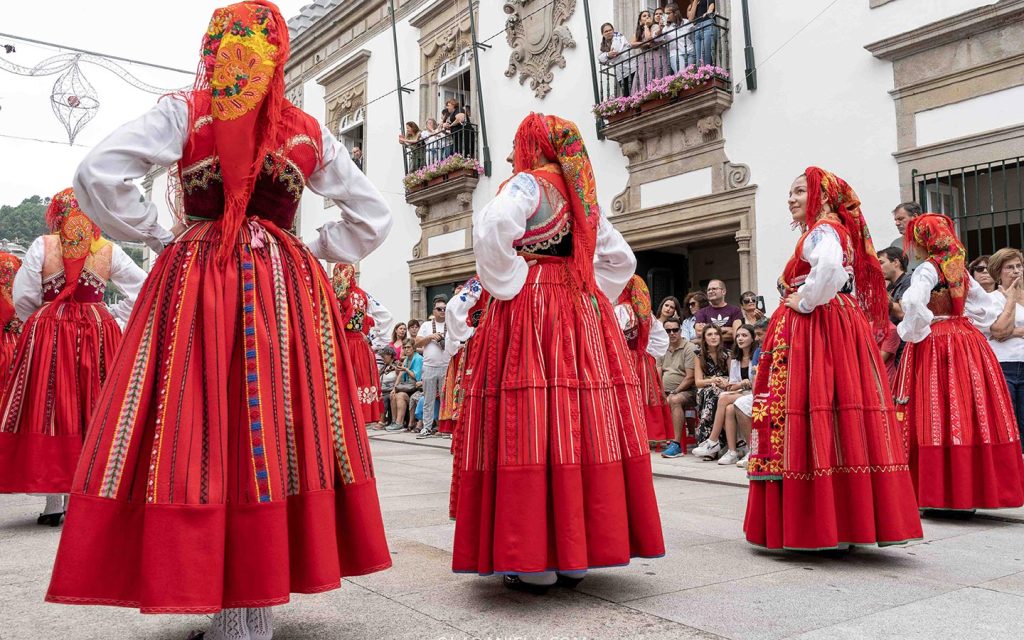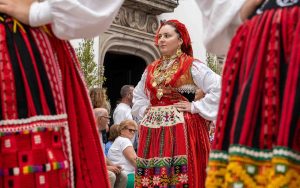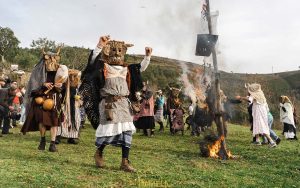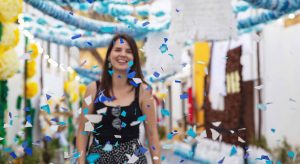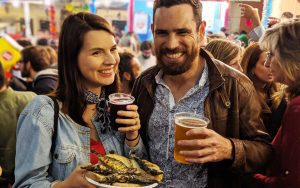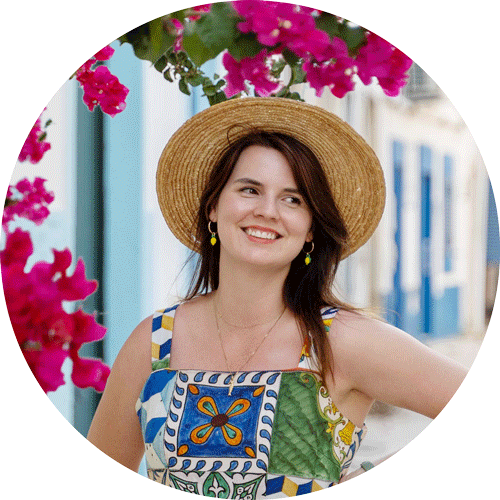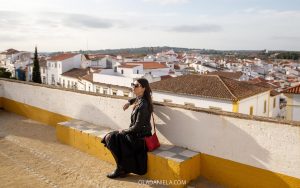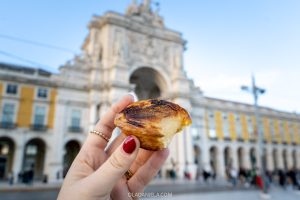If Mattel was to make a Portugal Barbie, the traje de Viana would be the costume.
After the train passes Porto the hills turn green and we pass vineyards that line the tracks and corn fields at their peak. Stone towns and cabbage patches zip by as we chug north towards Viana do Castelo, the capital of the Costa Verde – the well-named green coast.
When I arrive in Viana do Castelo on a sunny mid-August day, the town is in the midst of its biggest annual festival, the Romaria de Nossa Senhora d’Agonia. It’s mid-week so the locals are still warming up for the festivities and fun to come. I’ve travelled five hours from Lisbon by train for one particular event during the nine-day festival – the Mordomia Parade, or Desfile da Mordomia.
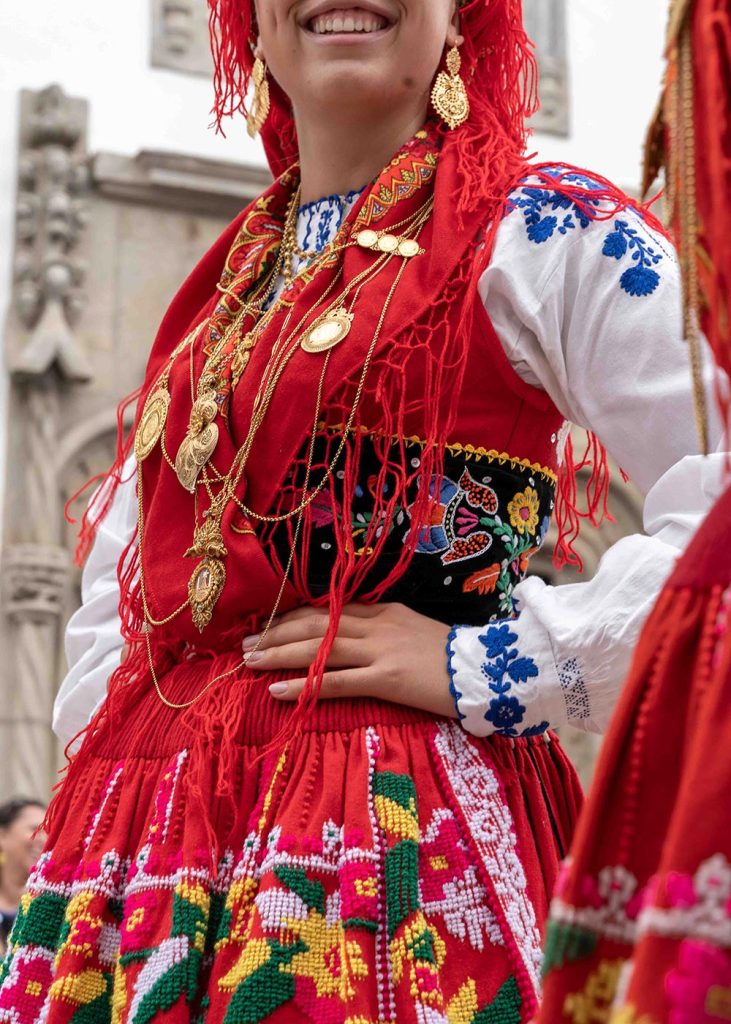
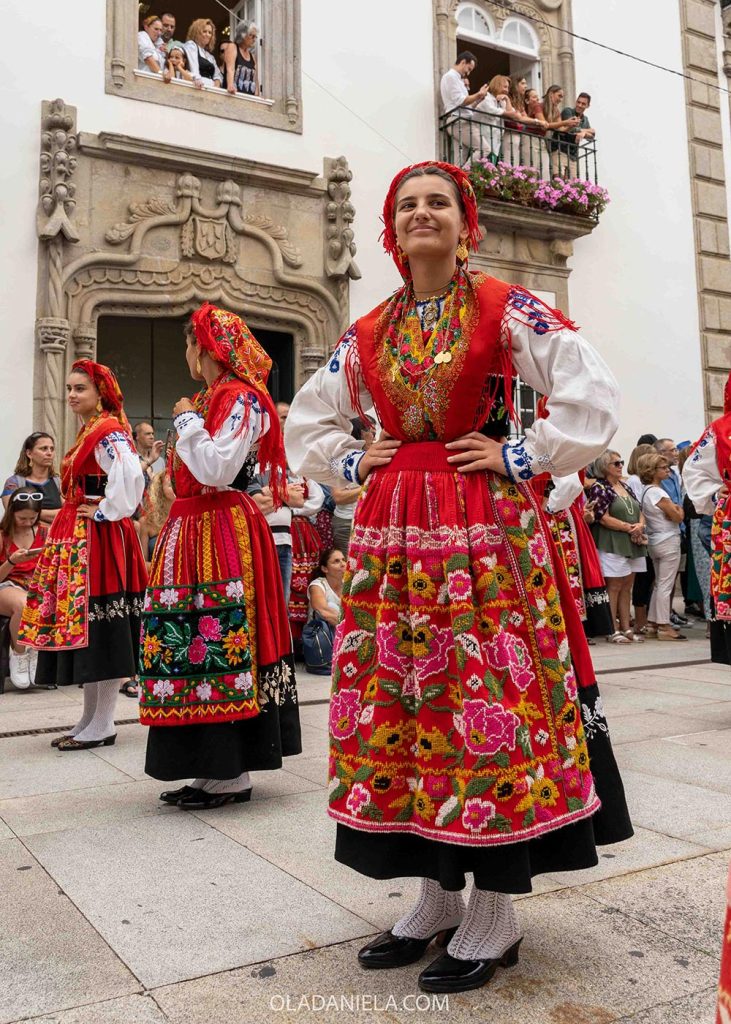
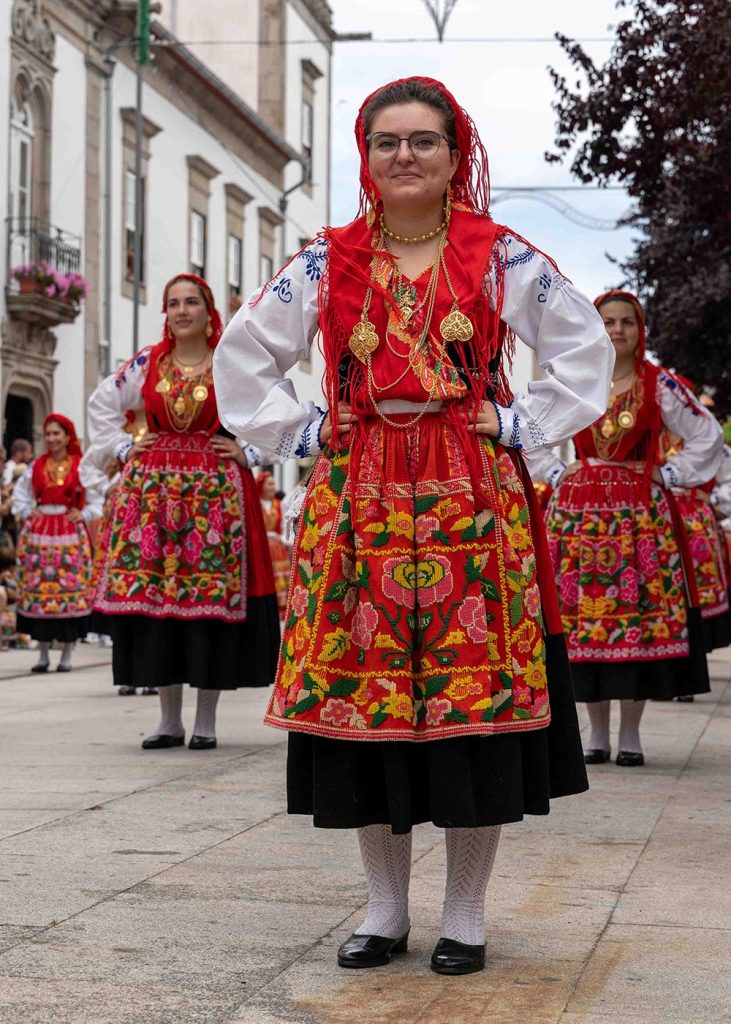
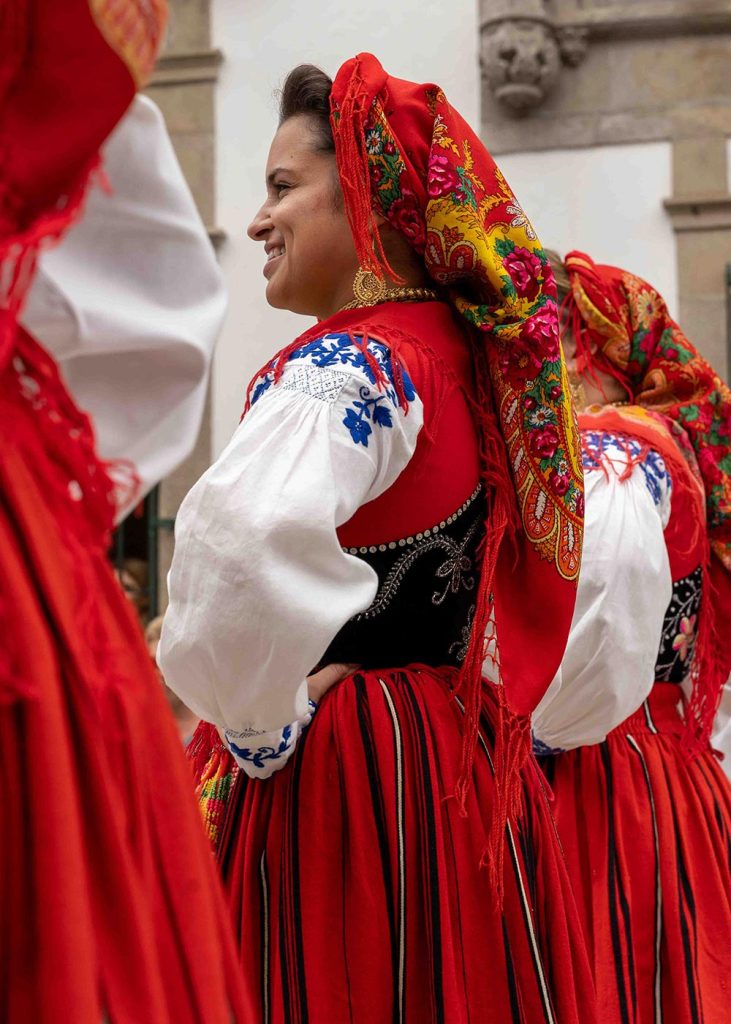
Contents
ToggleWatching 900+ Minho women pass by in the Mordomia Parade
After sitting in anticipation for some time, almost 1000 Minho women start to pass by, each walking tall and proud in perfect rows, with their hands on their hips and a beaming smile. They’re immaculately dressed from head to toe in the beautiful traditional folklore costumes from their area or village.
Beaming with pride, they trot along in uncomfortable slides, thick woollen skirts, embroidered white blouses and intricately designed colourful aprons. Many wear a hand-embroidered pocket on the right hip and a colete (vest) covered in bright floral embroidery. A vibrant tasselled scarf of eastern European origin covers the shoulders and the head.
Read next: Photo Diary: Guide to the Traditional Costumes of Viana do Castelo & Minho
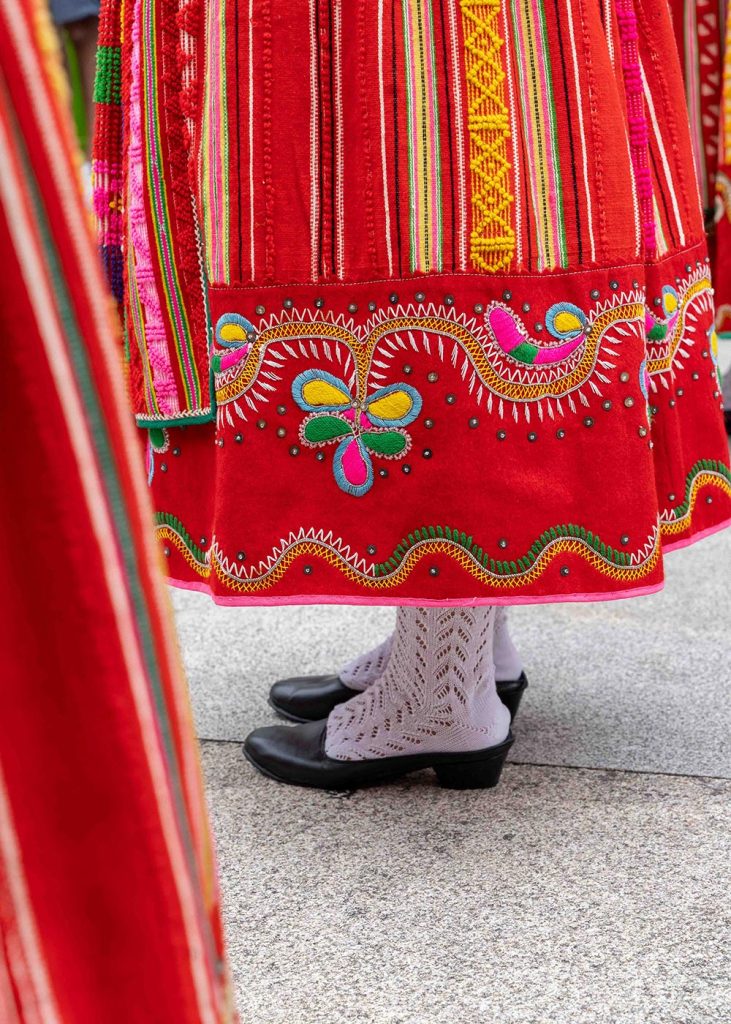
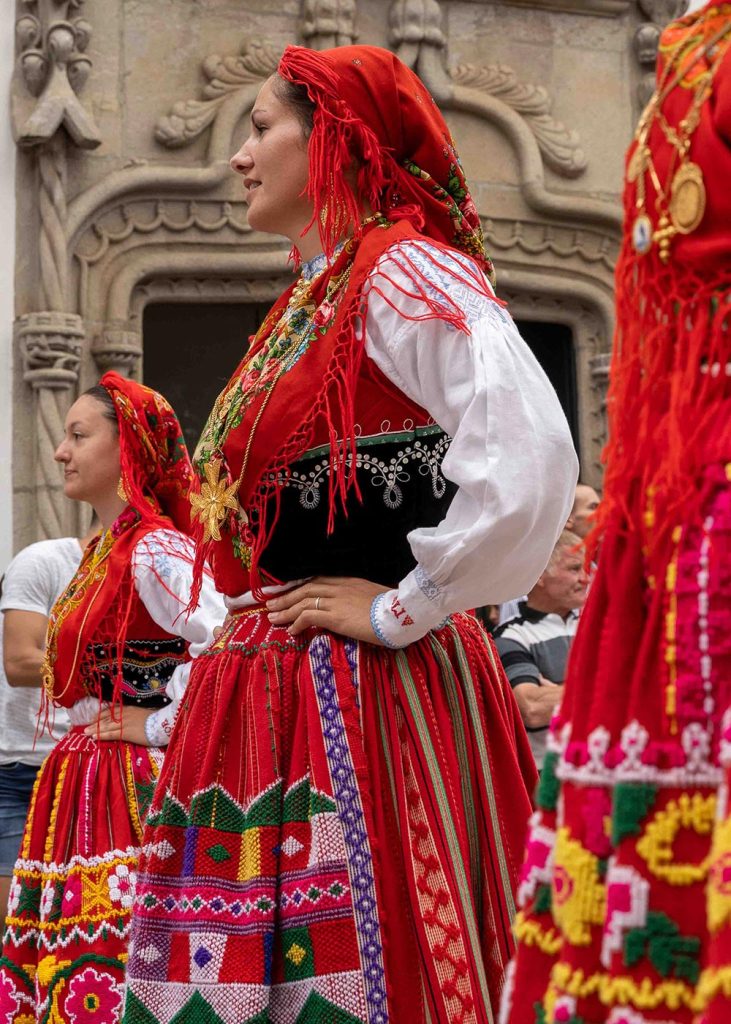
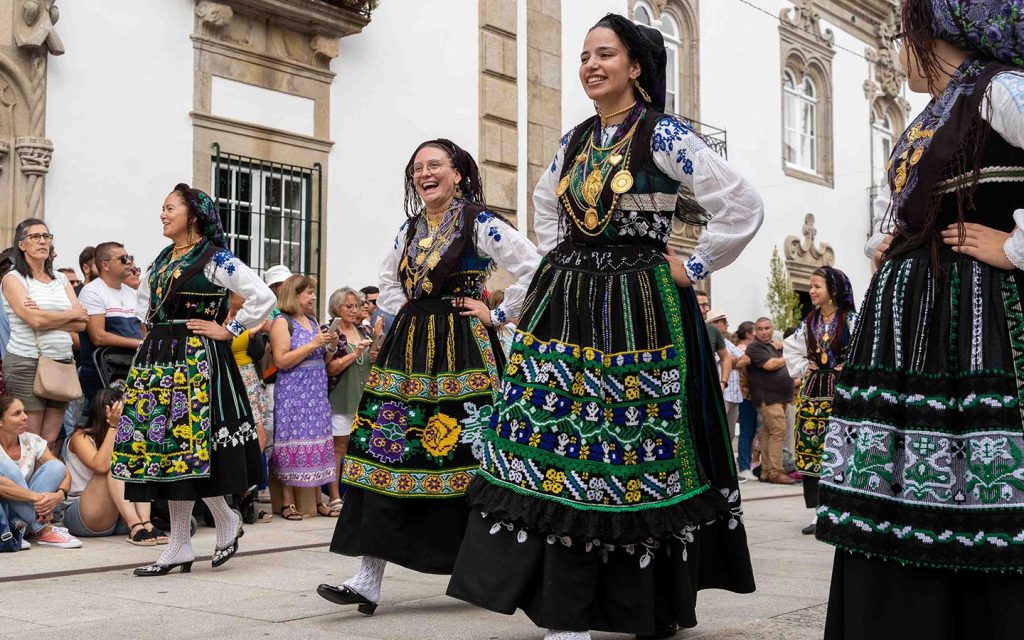
Read more…. 15 best things to do in Viana do Castelo
The largest outdoor showcase of gold in the world
Finally, the family jewels hang around their necks. Each woman is dripping with great quantities of gold, with some family heirlooms dating back centuries. Necklaces are pinned to fan out across the chest so many appear to be wearing a plate of gold across their chests, with the intricate and traditional filigree jewels catching the light.
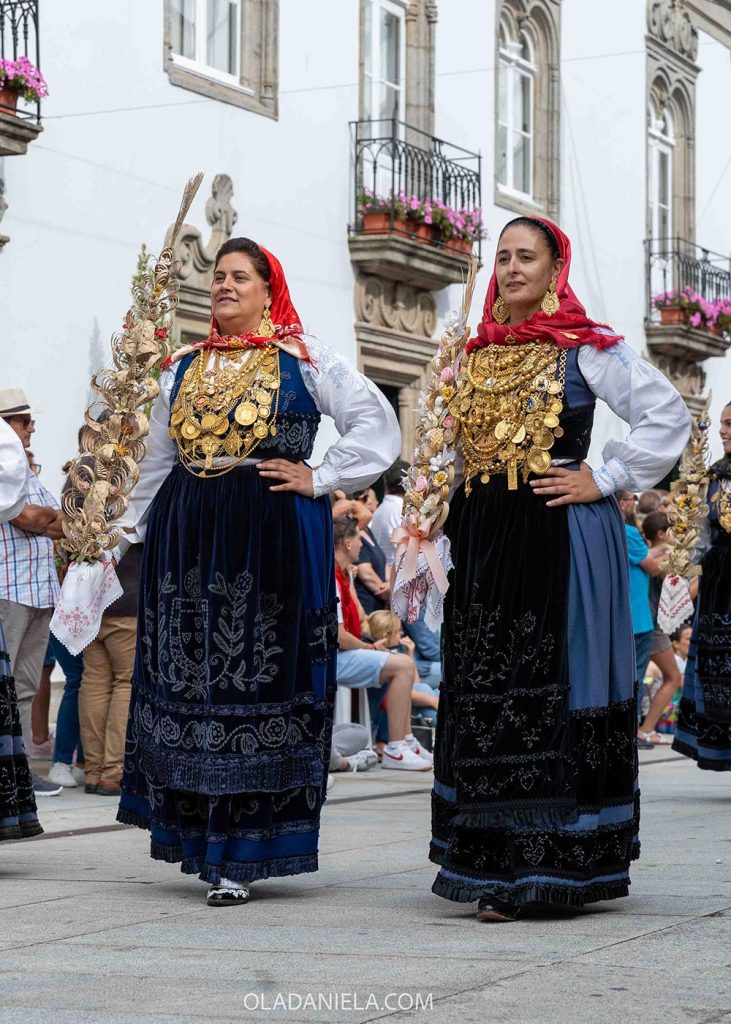

It’s said that collectively this parade of mordomas is the largest outdoor showcase of gold in the world. In Viana do Castelo I shared a hostel room with a jeweller, and she said the tradition used to be that women would receive these filigree gold balls at birth, birthdays and Christmas. The idea was that once they were a woman they’d have a whole strand to wear.
The strong and beautiful tradition is something that unites the women of this region. It’s incredible to witness several generations of the same family parade together and show off the beauty of their costumes and stunning gold pieces, which are often only seen in public on these days.


What is the Romaria de Nossa Senhora d’Agonia?
The Mordoma Parade is part of a much bigger festival. As with most fairs or festivals in Portugal, Viana do Castelo’s annual romaria is linked to religion and takes place each August. This festival in particular centres on Senhora d’Agonia, the patron saint of fishermen.
Over the nine-day festival there are dozens of events celebrating the local folk culture, including a religious sea procession with decorated boats, ethnographic parades and craft markets. Personally I think it’s one of the best festivals you can attend in Portugal as it is a real show of culture, pride, tradition, and celebration.
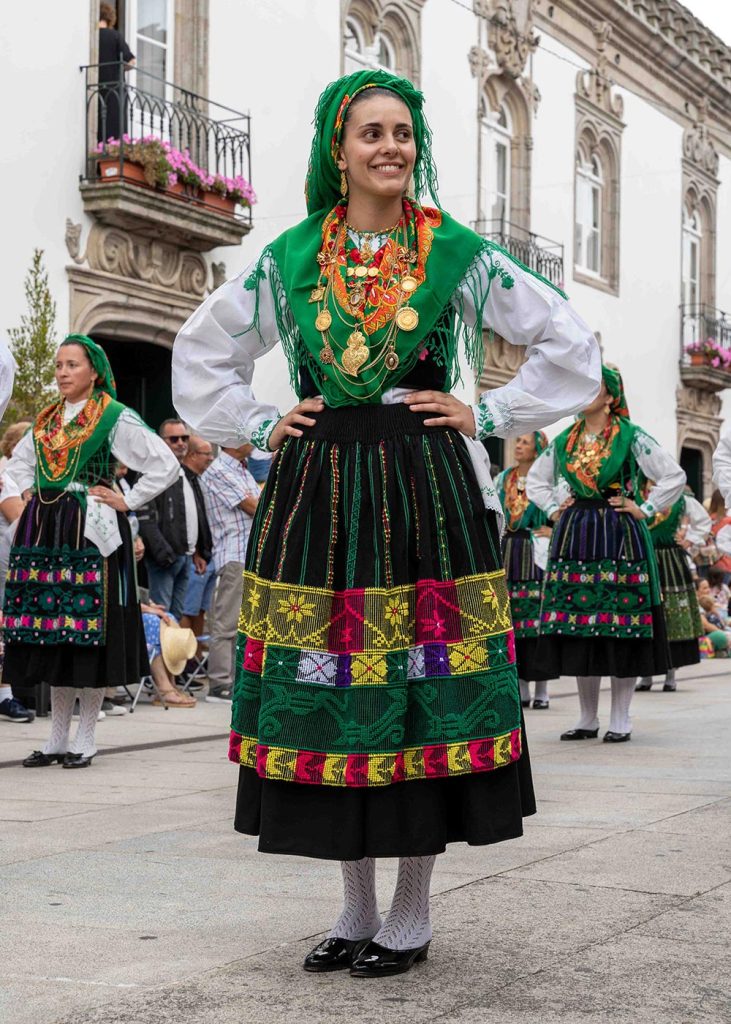
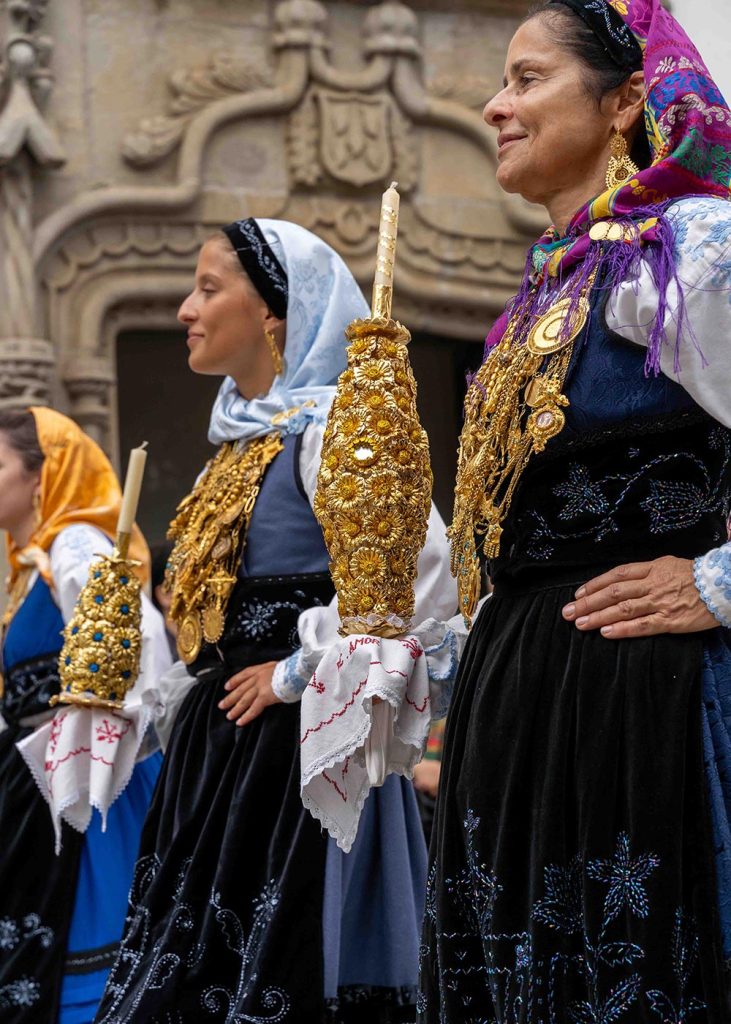
When is the Romaria de Nossa Senhora d’Agonia?
The festival always falls around the day of Nossa Senhora d’Agonia – August 20. In 2025, the festival dates are from August 12 to 20.
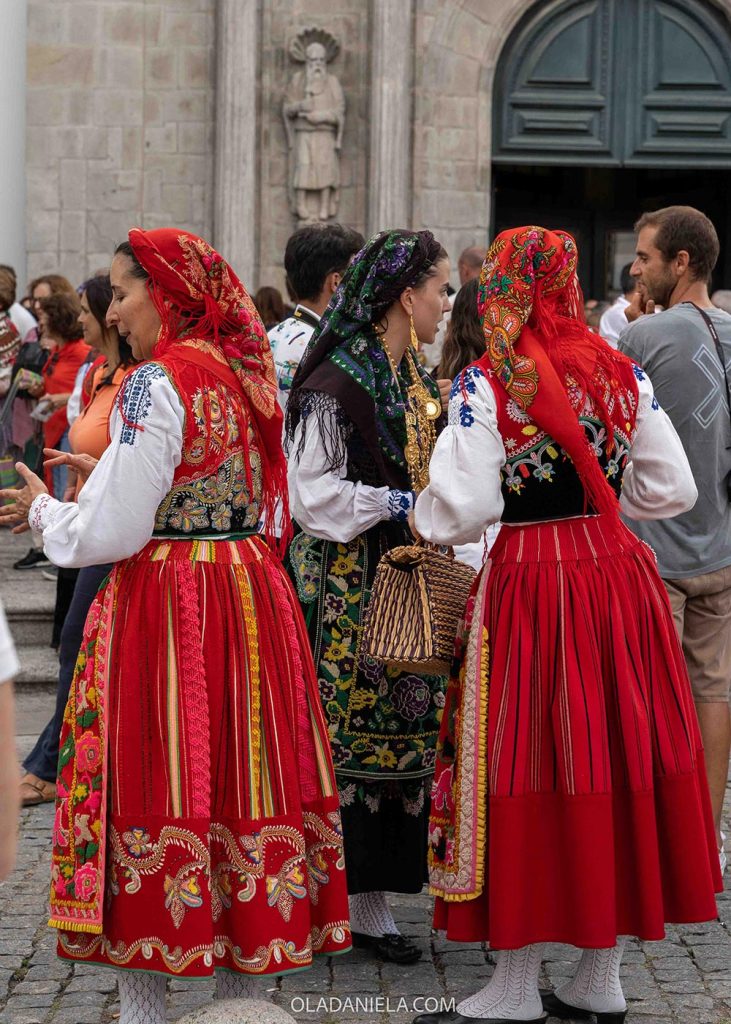
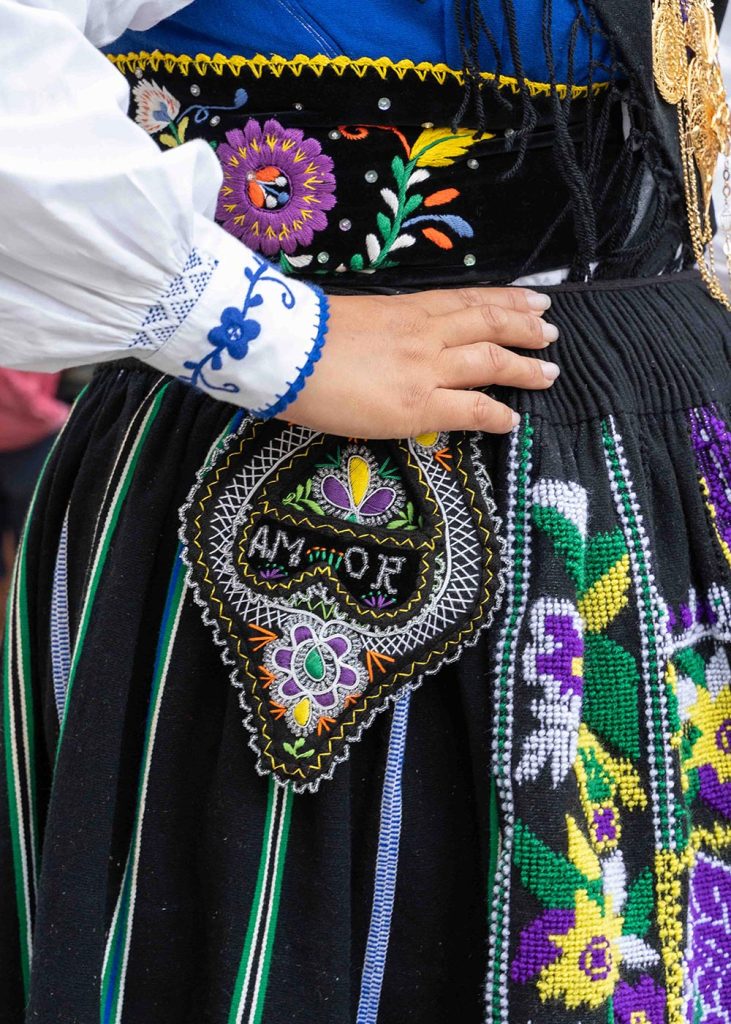
Read more… Ultimate Guide to the Best Festivals & Cultural Events in Portugal
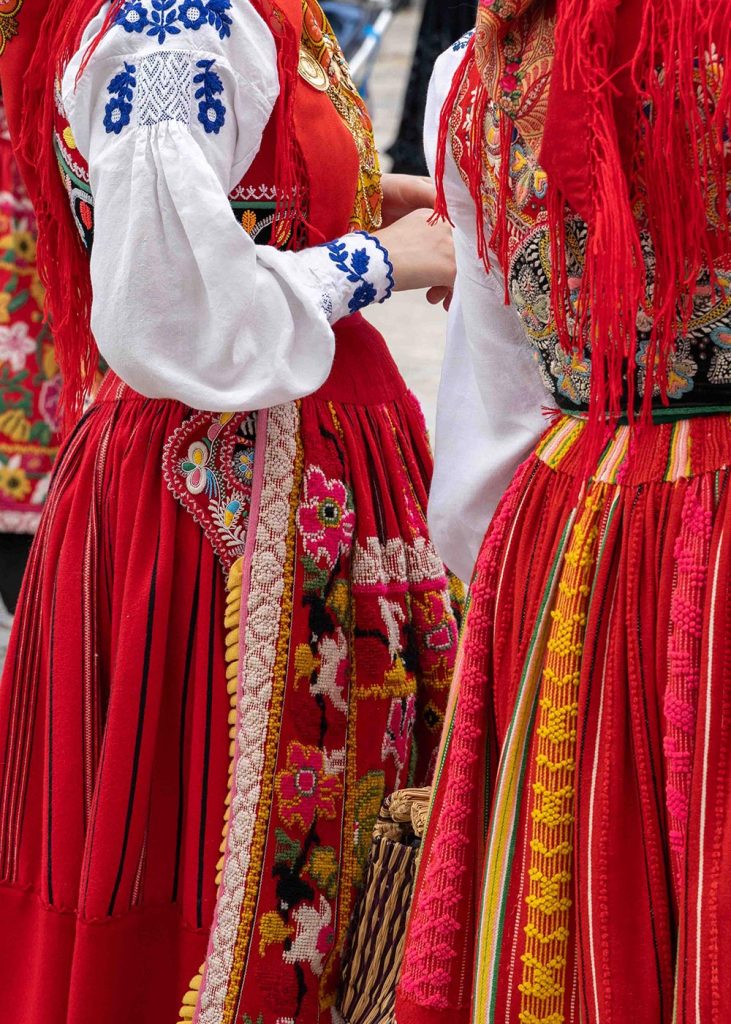
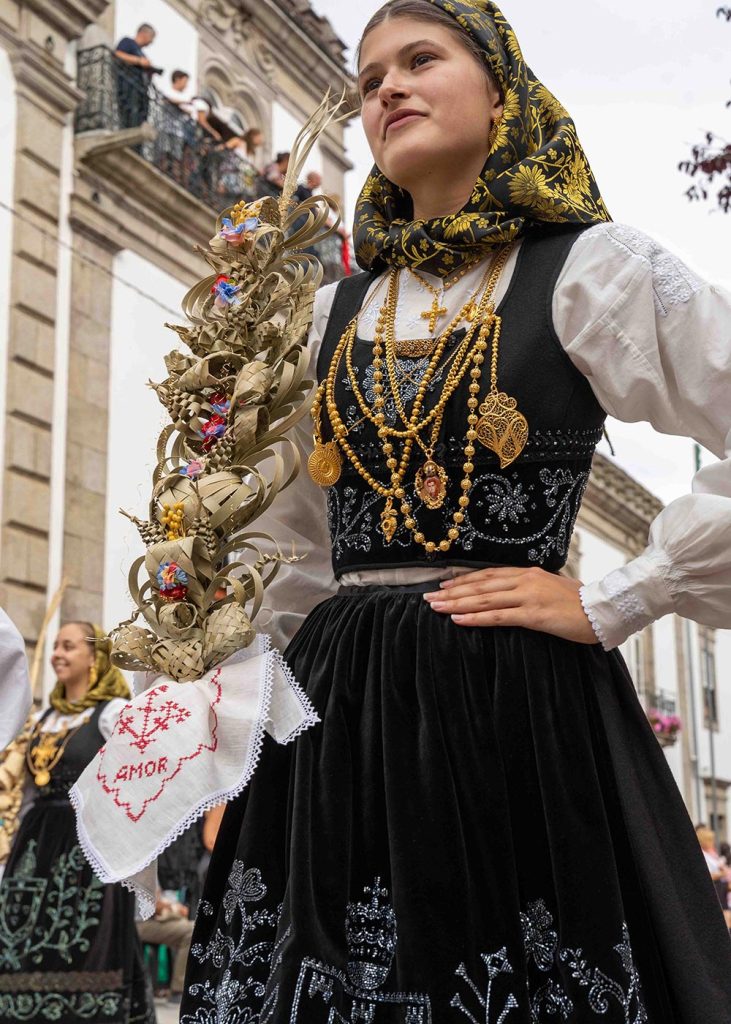
Other notable events at the Festas d’Agonia
There are four more main events during the Romaria in Viana do Castelo but you can expect concerts, folk dancing, fireworks and markets too.
Giants & Big-Headed Puppets Performance (Revista de “Gigantones e Cabeçudos”)
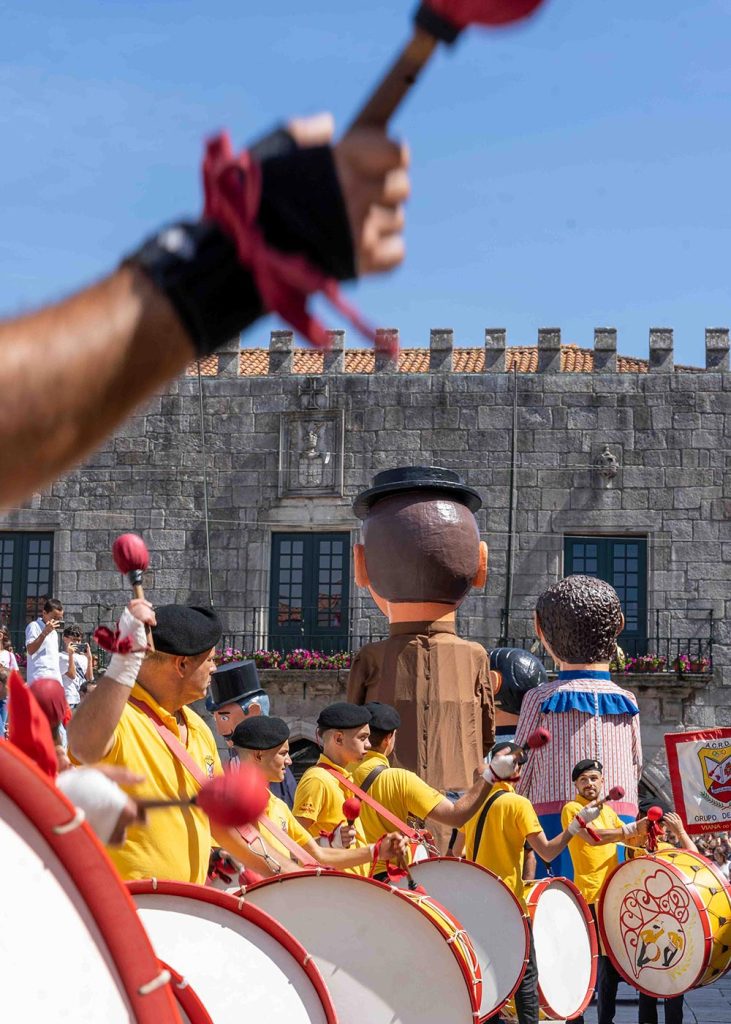
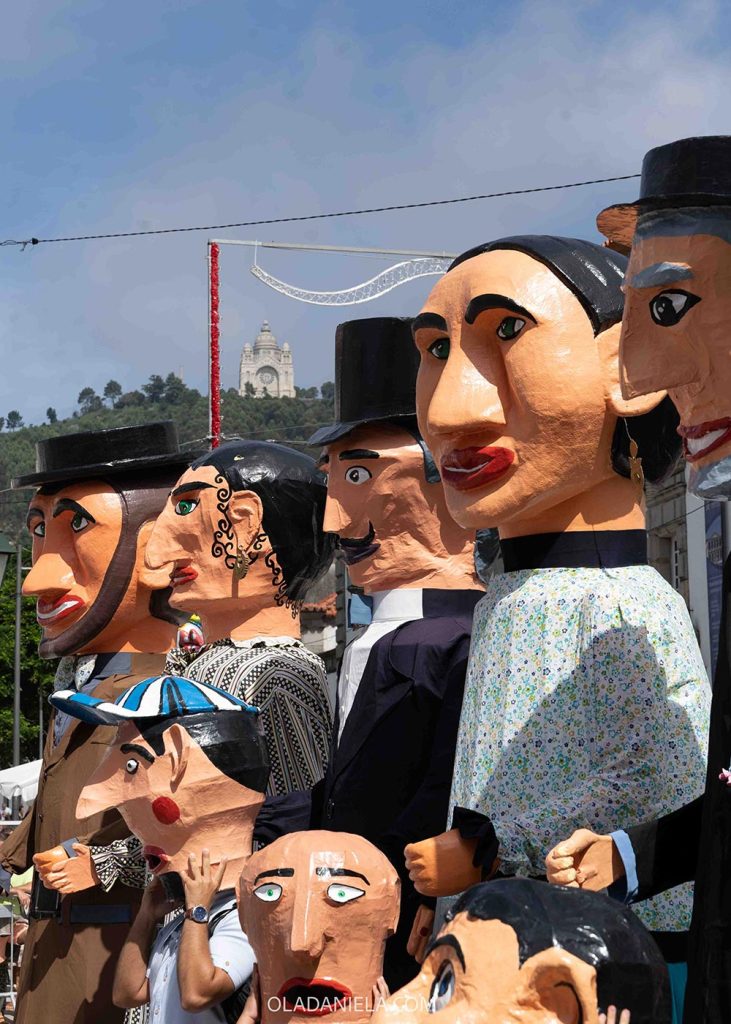
The deafening march of dozens of drums will ring out from Praça da República a few times across the festival. Gather around the central fountain to see the Gigantones (the giants) and Cabeçudos (big-headed puppets) put on a show to the rhythm of drumming troupes.
This tradition seems to be unique to the north of the Minho region of Portugal. The drummers and bagpipers put on an athletic show, giving it their all as different groups battle off against one another. Meanwhile the giants and puppets dance (in a clumsy way) to the beat. The giants are made with an iron frame stretching up to 4 metres high and weighing about 30 kilograms!
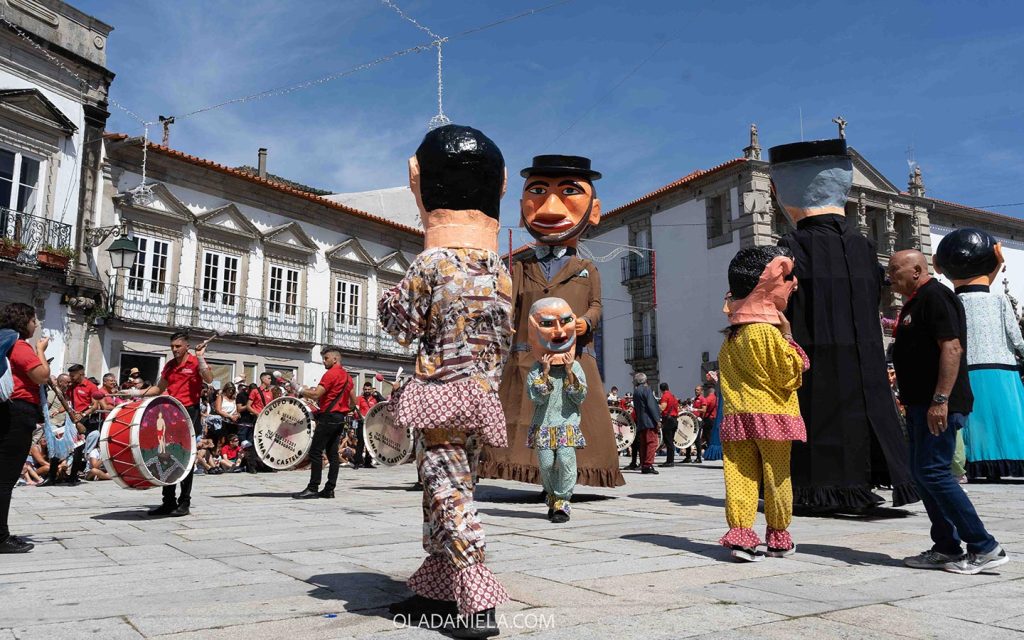
Heritage Parade (Cortejo Histórico/Etnográfico)
The heritage parade features more than 3,000 participants, huge floats, and plenty of drama. Apparently it’s like a living museum passing by, with locals showing off traditions and historic ways of life. This parade includes a bit of everything from avós (grandmas) showing off traditional crafts, to the drummers and Cabeçudo puppets.
Along the way, floats will hand out bowls of wine and pieces of cornbread and the crowd will yell at the bride and groom to kiss – yelling “beijinho”.
Flower Carpets (Tapetes Floridos)
From about midday until dawn on the evening of August 19, the residents of the Ribeira neighbourhood cover the streets with coloured salt carpets. Neighbours, friends, and even onlookers help cover the streets with 30 tonnes of colourful salts for the religious processions to walk over.
On the same evening, fishermen are decorating their boats with floral arrangements, decorations, and fishing gear, ready to take the saints out to sea on August 20.
The Procession Out to Sea (Procissão ao Mar)
On August 20, the day of Nossa Senhora d’Agonia, local fishermen give thanks to their patron saint, who protects them in their times of need at sea. After mass at the Santuário de Nossa Senhora d’Agonia, Vianese fishermen dressed in their best plaid shirts carry religious floats – weighing about 600 kilograms – out to the port.
Here the fishing vessels are blessed and loaded with the figures of Nossa Senhora d’Agonia, Nossa Senhora de Monserrate, Nossa Senhora dos Mares (Our Lady of the Sea) and St Peter. Thousands of people line the Lima River to watch more than 100 decorated boats float by and out to sea. When they return, the procession continues on land along the colourful salt carpets to the church.
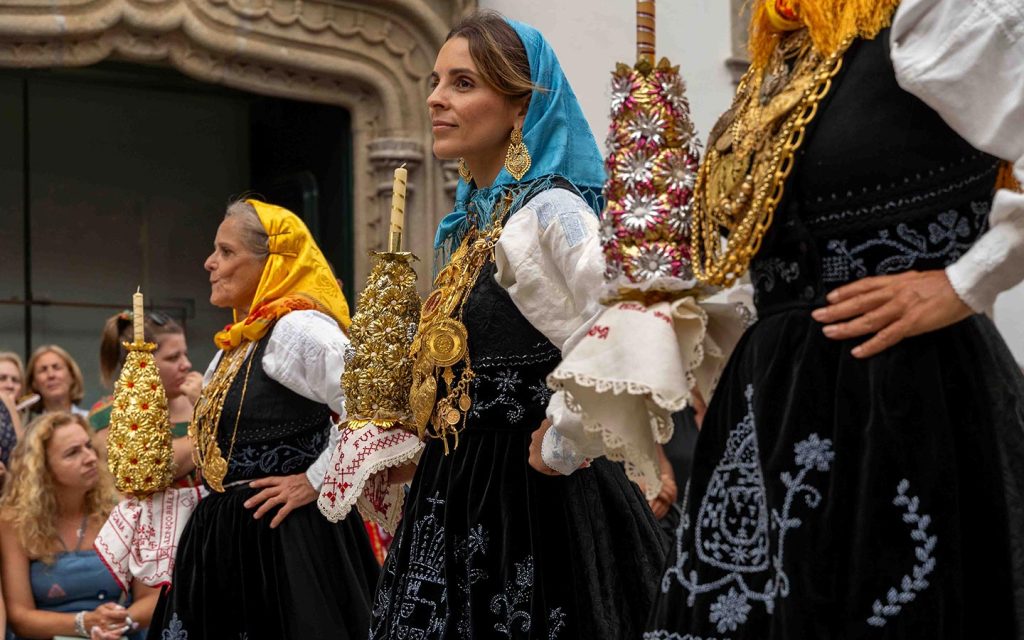

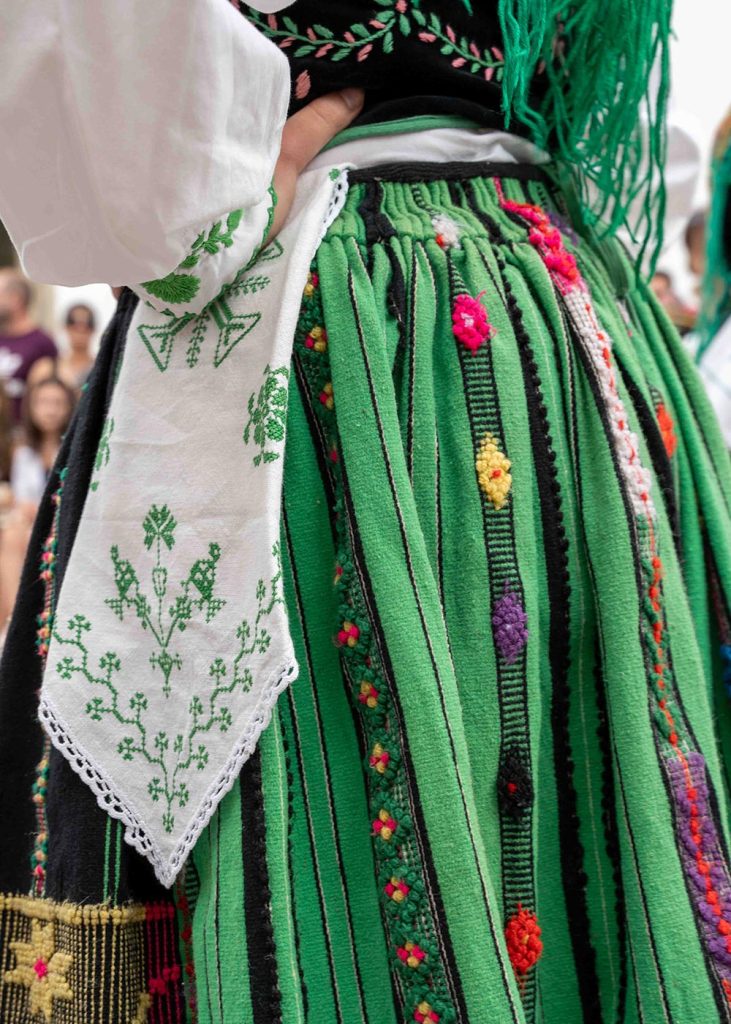
Read more… Where to eat in Viana do Castelo
Where to stay in Viana do Castelo
I recommend booking ahead for the festival, and you can find plenty of great hotels and small guesthouses downtown.
For me, a bucket-list stay is the 4-star Pousada de Viana do Castelo, which is a heritage hotel with amazing views over the town, famous sanctuary and coast. Up the hill there is also a highly-rated hostel called Albergue de Santa Luzia.
Close to town, the 4-star AP Dona Aninhas is well located. For something different, I’ve heard good things about the 4-star FeelViana Sport Hotel, which is on the other side of the Lima River near Cabedelo Beach.
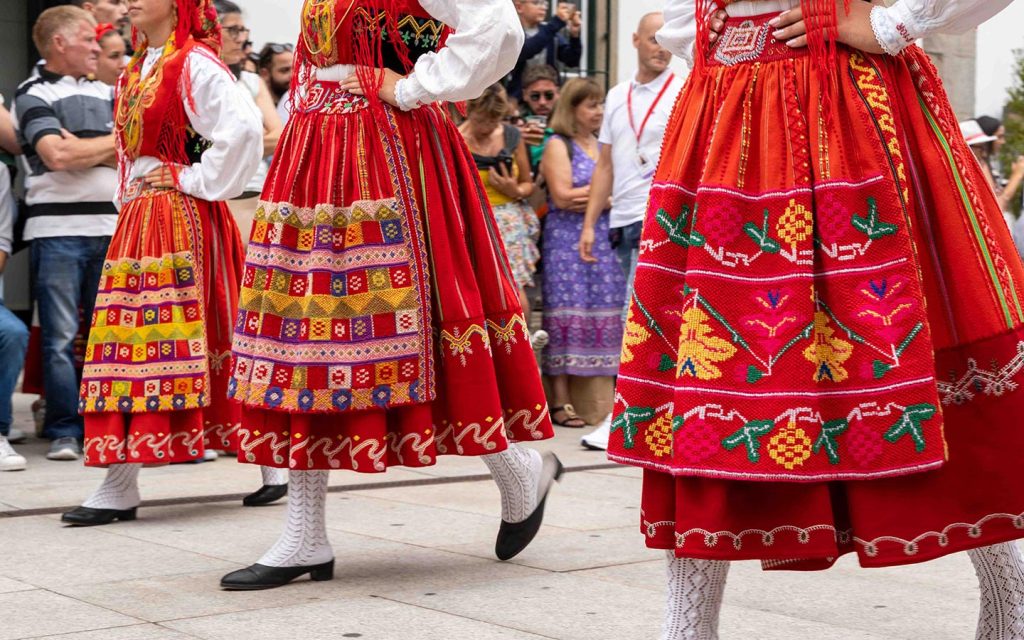
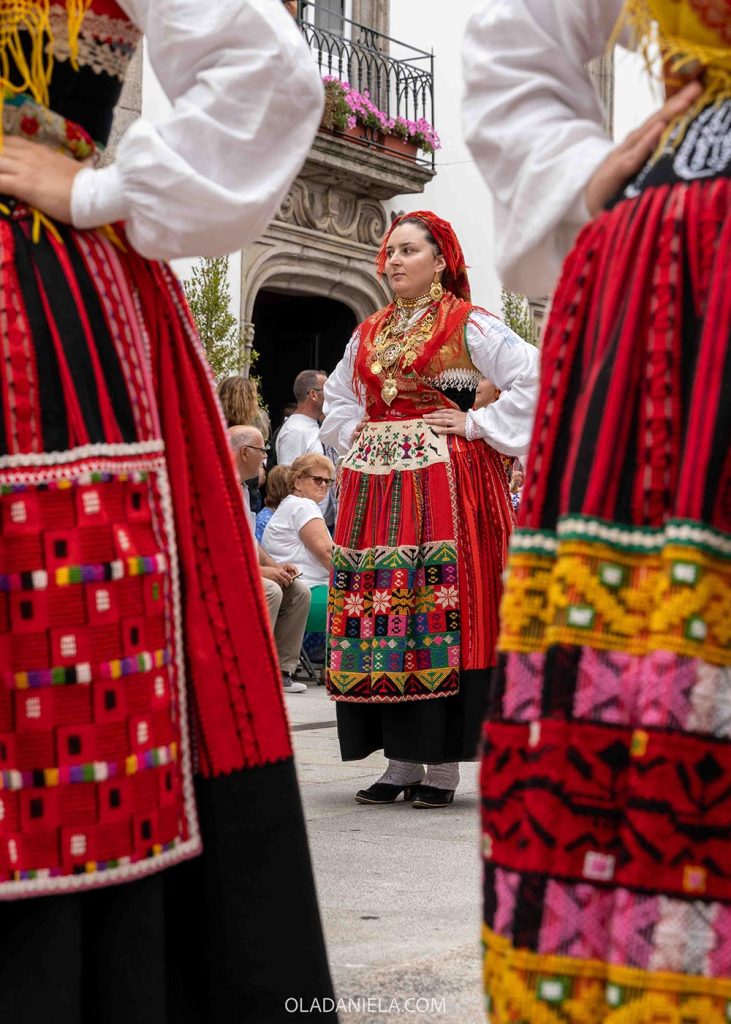
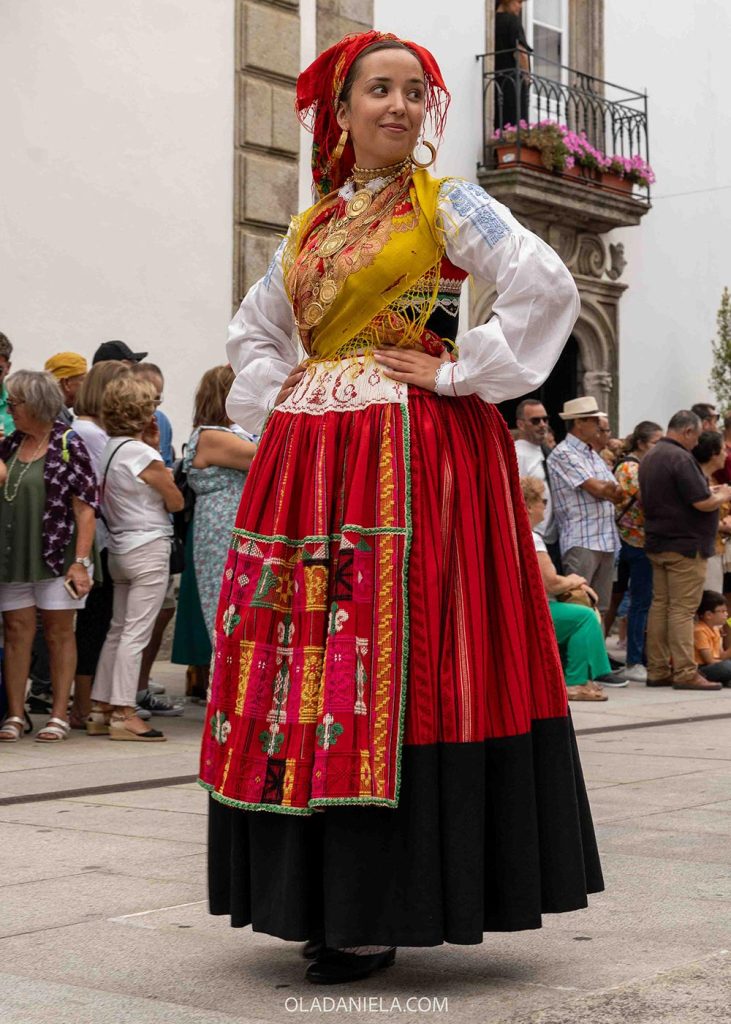
Find out more about the timing of different events on the official website for the Romaria.
Keep reading
- 15 best things to do in Viana do Castelo
- Where to eat in Viana do Castelo
- Photo Diary: Guide to the Traditional Costumes of Viana do Castelo & Minho
- How to spend 48 hours in Porto
- Best Festivals & Cultural Events in Portugal
- Where to go vintage and second-hand shopping in Porto
Pin it!




